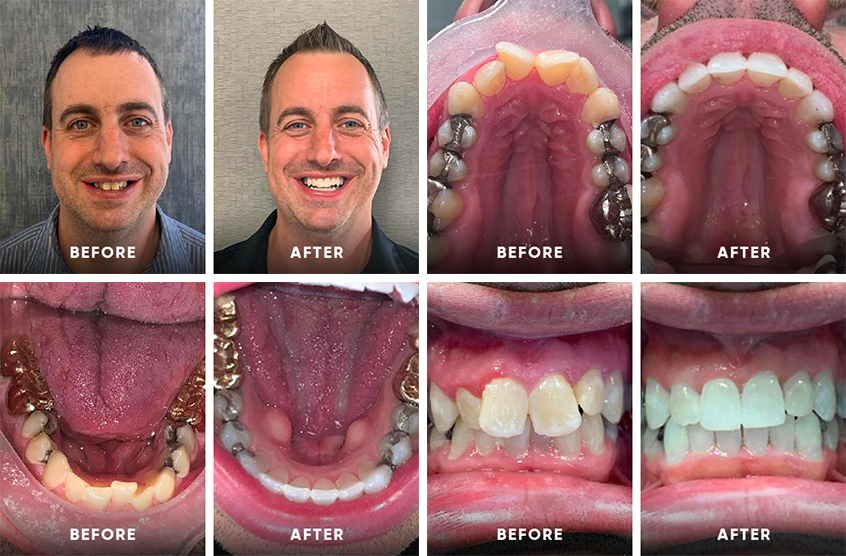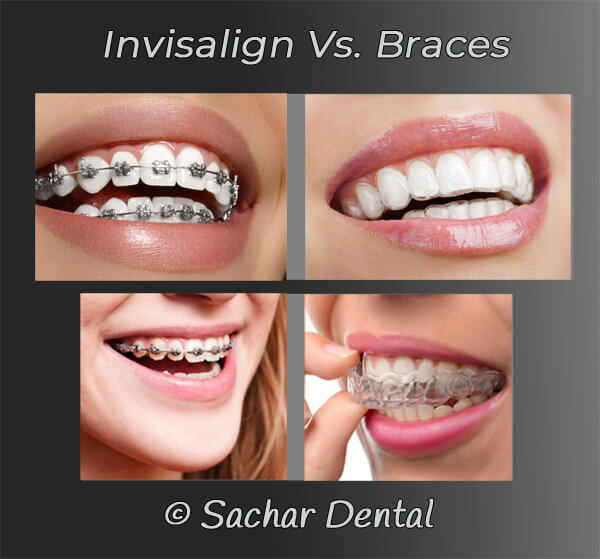The Price of Invisalign: Understanding the Investment in Your Smile
The Price of Invisalign: Understanding the Investment in Your Smile
Blog Article
Invisalign vs. Standard Braces: Which Option Is Right for You?
When thinking about orthodontic treatment, the option in between Invisalign and traditional dental braces presents several crucial factors that warrant cautious evaluation. Invisalign uses a very discreet option with detachable aligners, while standard dental braces provide a more noticeable yet reliable service for extreme imbalance. Each alternative includes distinct benefits and drawbacks related to appearances, comfort, therapy period, and expense. Understanding these subtleties is vital for making an informed choice that lines up with your individual choices and way of life. The inquiry continues to be: which option will best satisfy your orthodontic demands and expectations?
Summary of Therapy Options

In contrast, traditional dental braces include steel brackets and cords that are adhered to the teeth. This method applies continual stress with time to attain alignment. While reliable for complex orthodontic concerns, standard dental braces require regular visits for changes and can posture challenges in maintaining oral health as a result of the problem of cleansing about brackets and cables.
Both options have their qualities, and the option typically depends upon details dental problems, way of living choices, and client compliance. Inevitably, consulting an orthodontic expert is critical for determining the most suitable therapy plan customized to specific demands. Comprehending the nuances of each choice can dramatically affect the overall success of orthodontic therapy.
Aesthetic Considerations
A substantial element influencing the choice in between Invisalign and traditional dental braces is the visual allure each treatment offers. Invisalign aligners are crafted from clear plastic, making them essentially undetectable when put on. This discreet look is especially interesting teenagers and adults that might really feel awkward regarding their orthodontic treatment. The capability to preserve a natural smile throughout the positioning process can considerably boost the individual's confidence in social and specialist setups.
On the other hand, conventional dental braces contain metal brackets and wires, which can be more visible. While developments in orthodontic modern technology have actually caused the development of smaller sized braces and tinted elastics, typical braces still preserve an even more obvious account. For some people, the presence of dental braces may deter them from seeking required treatment.
Eventually, the choice in between Invisalign and traditional dental braces may depend upon individual preferences concerning aesthetic appeals. People that focus on discretion usually lean towards Invisalign, while those who are much less worried about exposure might decide for traditional dental braces. Recognizing the visual effects of each alternative is vital for making a notified decision that aligns with one's way of life and choices.
Convenience and Convenience

In terms of ease, Invisalign aligners are detachable, allowing people to enjoy their favorite foods without limitation and preserve optimal dental hygiene. Brushing and flossing are streamlined, as the aligners can be obtained during these routines, whereas traditional braces call for cautious steering around braces and wires.
In comparison, conventional braces demand routine changes, making them much less convenient for those with active schedules. In general, the convenience and benefit of Invisalign make it an attractive choice for lots of people seeking orthodontic treatment.
Therapy Period and Performance
While both Invisalign and standard braces work in correcting oral imbalances, the duration of treatment can differ considerably in between both options. Generally, Invisalign therapy can take anywhere from 12 to 18 months, relying on the complexity of the situation. The clear aligners work by slowly changing teeth into their wanted positions, and normal follow-ups with an orthodontist help guarantee progress remains on track.
In contrast, standard dental braces typically require a longer commitment, usually ranging from 18 months to three years. This is due to their fixed nature and using wires and braces, which can be much more effective for severe misalignments and complicated instances (Invisalign). The treatment effectiveness of typical dental braces is well-documented, as they permit precise adjustments and greater control over try this web-site tooth movement
Inevitably, the choice in between Invisalign and conventional braces might depend upon both the awaited treatment period and the specific oral concerns available. Consulting with an orthodontist is critical, as they can give tailored suggestions based on individual needs, guaranteeing the picked method aligns with preferred timeframes and end results.
Cost Comparison and Insurance Options
Price plays a substantial function in the decision-making procedure for people thinking about orthodontic therapy, whether going with Invisalign or conventional braces. Typically, the expense of Invisalign arrays from $3,000 to $8,000, while standard dental braces usually cost in between $2,000 and $6,000. Variables affecting these prices consist of the intricacy of the case, the duration of therapy, and geographical location.
Lots of dental insurance coverage strategies offer partial coverage for orthodontic therapies, but the specifics can vary widely. Normally, traditional dental braces might be extra frequently covered by insurance coverage plans contrasted to Invisalign, which some insurers classify as a cosmetic procedure.
Additionally, a number of orthodontic techniques offer versatile layaway plan, making both treatment options a lot more easily accessible. Patients need to ask about possible funding choices and price cuts for in advance repayments. Examining the overall price, including insurance advantages and payment plans, is essential for making a site here notified decision that lines up with both visual choices and budget factors to consider.

Conclusion
In recap, the option in between Invisalign and typical braces depends upon several aspects, including aesthetic choices, convenience, therapy period, and cost. Invisalign provides a discreet, detachable alternative that helps with dental health and nutritional versatility, while typical braces might be preferable for complex oral concerns and typically come at a reduced cost point. Ultimately, appointment with an orthodontist is vital to analyze specific circumstances and establish one of the most suitable therapy alternative for achieving ideal oral placement.
When taking into consideration orthodontic treatment, the option between Invisalign and typical braces presents several vital aspects that warrant mindful examination.Contrasting Invisalign and conventional braces exposes unique treatment alternatives for orthodontic modification.While both Invisalign and standard dental braces are efficient in fixing dental misalignments, the duration of treatment can vary significantly between the two choices.Price plays a considerable duty in the decision-making procedure for people taking into consideration orthodontic therapy, whether opting for Invisalign or conventional dental braces.In recap, the choice between Invisalign and traditional dental braces hinges on numerous aspects, consisting of aesthetic preferences, convenience, treatment period, and expense.
Report this page